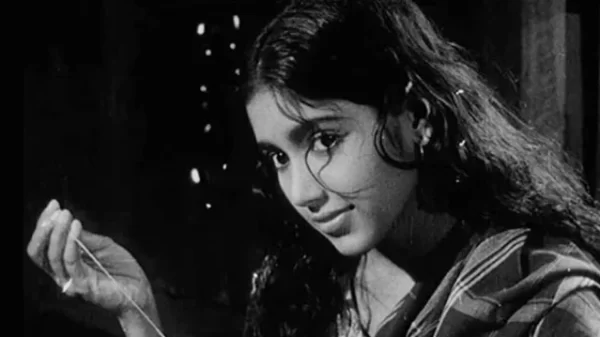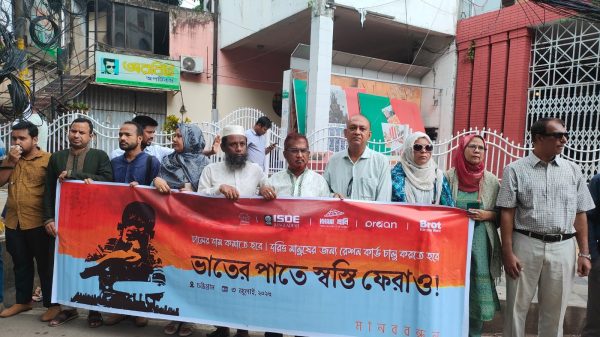Is It Right to Deny the Awakening of the Bengali Hindu Youth?

- Update Time : Wednesday, January 8, 2025

For nearly eight decades, this land has been known by three names: East Bengal, East Pakistan, and Bangladesh. During this time, the Bengali Hindu community has played a significant role in the region’s history, participating in its triumphs and enduring its challenges. However, throughout this period, Bengali Hindus have persistently migrated out of the region.
The Quiet Exodus
For the first six decades, migration primarily involved moving to India. Later, it expanded to other countries around the world. Over the last two decades, many Bengali Hindus have bypassed India entirely, relocating directly to other countries of their preference. A significant portion, however, still migrates to India.
This migration has largely unfolded silently. Particularly after the 1960s, it drew little public attention. When analyzed, the migration of Bengali Hindus stands as one of the world’s quietest mass migrations.

Lack of Intervention
No government, organization, or civil society figure in this land has ever taken significant steps to prevent this migration. Instead, it has been widely accepted as a reality that Hindus would leave. Even within the Bengali Hindu community, this notion has taken root, either consciously or subconsciously.
A Turning Point in 2024
For the first time since the political transformation of August 2024, Bengali Hindus have actively taken to the streets. They have voiced their desire to remain in this country and protested against the oppression and silent persecution aimed at driving them out.
Witnessing this movement was both surprising and inspiring. It was later suggested that this mobilization was politically instigated or supported by a specific party, which added to my astonishment. Such an active movement was unprecedented in the history of Bengali Hindus in this land.
Understanding the Migration Patterns
My interest in the Partition of India and the refugee crisis has led me to study this subject extensively, observe it firsthand, and interact with refugees across generations for over 40 years. This exploration has helped me identify several characteristics of the migration of Bengali Hindus.
The Educated Exodus
From the late 1940s through the 1950s, the migration of highly educated Bengali Hindus was not primarily driven by fear of persecution. When the Muslim League gained a majority in East Bengal in 1946, a segment of educated Hindus foresaw that this region would become part of Pakistan. They began relocating themselves accordingly.
After the creation of Pakistan in 1947, this migration accelerated, driven by concerns about their social and cultural future and that of their descendants. By 1955, the majority of this migration by the educated class was complete.
This group believed that staying would mean being governed by individuals with a lower cultural standard. They also feared that the region’s limited middle class—primarily economically driven—would fail to provide the stability necessary for governance. Unwilling to tie their fate to such an unstable environment, they left.

Political Instability and Migration
Even prominent Hindu politicians delayed their migration to India until after 1958, largely due to Pakistan’s persistent political instability. For example, during the United Front era, there were 70 Hindu members in East Bengal’s Provincial Assembly. Yet, by the end, most had either migrated to India or other countries, with only a handful passing away in Bangladesh.
Cultural Adherence
Another significant reason for migration was the preservation of cultural and social practices. Hindu society, deeply rooted in caste divisions, adhered to customs such as caste-based marriage. These traditions, ingrained over millennia, were difficult to abandon. Many chose to migrate to India to preserve these practices.
Challenges for Lower-Class Hindus
Lower-class Hindus in East Bengal faced a different set of challenges. With low literacy rates, they were primarily involved in agriculture, fishing, and river-based livelihoods. Those who became refugees in India were often relocated to hilly areas, far removed from their traditional occupations.
In Assam, Bengali Hindus faced the “Bengali Exclusion Movement” of the 1960s, where many lost everything again. As a result, a section of lower-class Hindus adapted to any environment and chose to survive locally. Instead of becoming direct refugees, they opted for gradual, silent migration.
This phenomenon became a hallmark of the silent migration of Bengali Hindus.

The State’s Role
Even after the emergence of Bangladesh, the country’s politics remained mired in instability. This left the state unable—or unwilling—to address these social challenges.
The events following August 5 brought a surprising and inspiring phenomenon to light: three large gatherings of Bangladesh’s Hindu community. These gatherings were remarkable not only for their size but for two striking details: nearly 90% of the participants were young people, and the ratio of men to women was almost equal.
Beyond the presence of the speakers, many young men and women attending the events used platforms like Facebook Live or television to voice their thoughts. Their message was clear and resolute: this country is their fatherland or motherland, and they will not leave it. They demanded an immediate end to both the overt and silent persecution forcing them to consider leaving their homeland.
A New Generation’s Bold Stand
This bold stand is unprecedented for the Hindu community in East Bengal or Bangladesh. Historically, young people have often been the first to migrate in silent waves. They would leave, establish themselves through hard work, and later bring over their elderly family members. However, this time, the youth are advocating to stay. Instead of promoting migration, they are demanding their rightful place in their motherland.
Over the past few months, I have delved into the reasons behind these positive developments. Several key observations have emerged.
The Shifting Perception of Society
Over the last 78 years, changes in Bengali Muslim society have made obsolete the old perceptions of the 1940s and 1950s, when Bengali Hindus viewed themselves as culturally superior. This shift is evident in the mindset of the current generation of Bengali Hindus, whose cultural outlook has evolved alongside these changes.
More importantly, this new generation of 20-to-25-year-olds has grown up witnessing Bengali Hindus rise to prominent positions in society—becoming vice-chancellors, judges, secretaries, managing directors of banks, and holding senior roles in the army and police. These young people have seen that merit, not religion, defines success. Unlike the early days of Pakistan or even the nascent years of Bangladesh, the state no longer embodies a mindset of hostility toward Hindus.
This environment has fostered a psychological shift. Unlike their predecessors, this new generation feels intrinsically tied to this country and believes their future lies here.

Hope for a New Chapter
Their gatherings inspired hope. It seemed as though young Bengali Hindus were embarking on a new chapter. The leader they chose, monk Chimmoy Das, is also young, and his speeches reflect his commitment to ensuring Hindus do not leave this country. After hearing their speeches and witnessing their gatherings, I assumed that moderate and progressive political parties in Bangladesh would rally behind them.
However, I have yet to understand why Chimmoy Das was arrested. The government’s broad and reductive assessment of these gatherings and the Bengali Hindu community reflects a flawed perspective.
Misguided Claims and Assumptions
Initially, it was claimed that persecution against Hindus occurred because they predominantly support the Awami League. This argument ignores the global dynamics of minority behavior. Minorities everywhere seek safety, but their political alignments vary.
In India, for instance, Muslim minorities do not all support Congress. Where they find security with communist parties, they align with them. Where they find dignity with regional leaders, they lend their support there. Similarly, in Bangladesh, Hindu support for the Awami League is not uniform. For example, in Faridpur, Hindus overwhelmingly back the Awami League, but in Bogra, many support the BNP, while in Rangpur, they align with the Jatiya Party.
Moreover, several prominent BNP and Jatiya Party leaders are Bengali Hindus. The constitution grants every citizen the freedom to choose their political affiliations, and this diversity of choice exists among Hindus, just as it does among other groups in countries like the U.S. or France.

Misinterpreting Cultural Slogans
Another misguided criticism emerged around the “Jai Shri Ram” slogan used in these gatherings, with some labeling it a BJP slogan from India. While BJP members do use this slogan, its origins in Indian politics trace back to Congress leader Mohandas Karamchand Gandhi. Gandhi used the name “Ram” to connect his movement with the people of northern India.
A British researcher once observed that Tulsidas’s Ramayana holds the same cultural significance for northern Indians as the Bible does for Christians. The character of Ram is revered as a sacred figure.
Similarly, in Bangladesh, critics of “Jai Shri Ram” fail to grasp its cultural resonance within the Bengali Hindu community. Until recently, it was an unwritten tradition in Bengali Hindu households to recite the Bengali translation of Tulsidas’s Ramayana aloud in the evenings. This practice continues in some rural areas.
The Ramayana’s influence is deeply woven into Bengali Hindu society. Fathers aspire for their sons to emulate Ram’s devotion, mothers wish for their daughters to marry husbands like Ram, and siblings model their relationships on Ram and his brothers. Even wedding blessings reflect this cultural narrative, with elders wishing brides to be as virtuous as Sita.
A Missed Opportunity
Those who fail to understand this cultural reality and instead politicize this new patriotism and awakening among Bengali Hindu youth—through repression, persecution, and imprisonment—are driving this emerging consciousness down an undesirable path.
For the first time since 1946, a new generation of Bengali Hindus has emerged in this land—a generation determined to stay. Forcing them onto a different path not only squanders an opportunity for the state and society but also marginalizes 15 to 20 million people.
Dismissing such a significant population is never the right approach, especially when their numbers exceed half the population of Australia.
The author is a nationally awarded journalist and the editor of Sarakhon and The Present World.










Leave a Reply